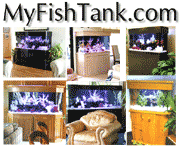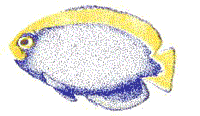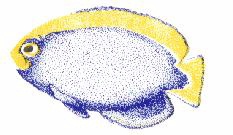|
Establishing a pair of Clownfish
By Stanley Brown
The Breeders Registry
It is up to the aquarist to decide on a species and then seek out a
potential pair. A. ocellaris and A. perculae are good first choices.
These species are relatively small and less aggressive than some of the
other anemonefish. However, there is no compelling reason that I
can think of why the other species would be poor choices, expect perhaps
with the exception of A. latezonatus which comes from slightly cooler
waters and seems to do best with temperatures of 75°F.
There are several methods of obtaining pairs.
1. Purchase a “proven” pair from another aquarist. Proven meaning
that the pair has been observed to spawn. Proven pairs will
typically command the highest dollar and if you are purchasing from a breeder,
find out why they are selling their broodstock. If it is an older
pair, it might be advisable to continue your quest.
2. Purchase a “pair” from a wholesaler or retailer. Unfortunately,
these are pairs made by humans, rather than a pair collected from the wild.
Often if a large and a small fish seem compatible they may be offered as
a pair.
3. Purchase individual fish, introducing a large fish and a small
fish together into an aquarium. Watch for aggression and separate
if one fish (usually the smaller) is constantly chased and nipped at.
This method is generally successful, however, it may be some time before
the fish become sexually mature and begin spawning.
The acquisition of a “proven” pair is no guarantee that the aquarist
will be immediately rewarded with a nest of eggs by the anemonefish.
It has been commonly reported that the disruption of moving the fish can
interrupt even the most “regular” spawners. How long is difficult
to predict, but 6 months (or longer) is not uncommon.
i- Fautine, Daphne G. & Allen, Gerald, R., 1994,
Anemonefishes and their Host Sea Anemones, Tetra Press, Germany.
ii- Personal communication, 2000, Joe Lichtenbert, Reef
Propagation’s, USA.
iii- Ibid. i
iv- Moe, Martin Jr., A., 1989, The Marine Aquarium Reference:
Systems and Invertebrates, Green Turtle Publications, USA
v- Wilkerson, Joyce D., 1998, Clownfishes: A Guide to
their Captive Care, Breeding & Natural History; ,Microcosm Ltd.,
USA
vi- Brown, Stanley D., 1998, Low Tech Larval Trap,
The Journal of MaquaCulture, Vol 6:1-17 |
|











